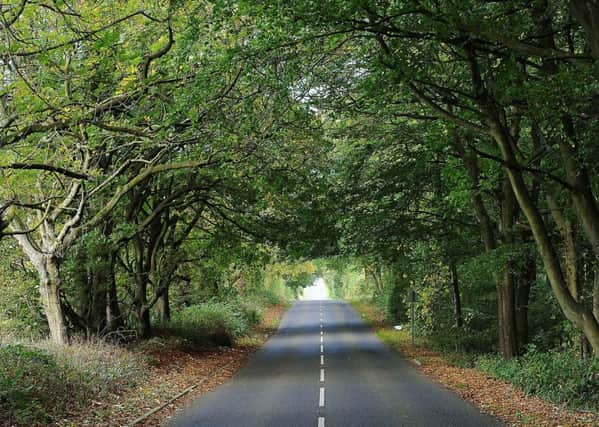Norway shows the road to boosting our tourism


In October 2010, Edinburgh Napier University’s Wood Studio research centre organised a conference highlighting work done in Norway to enhance its national tourist routes. The focus was on small structures and other interventions that had been designed to punctuate long travel distances with places to stop, rest and possibly explore. Each one was beautifully designed: the many viewing platforms, bird hides, picnic places, parking stops, lay-bys, toilets and even outdoor theatre spaces captured the imagination of an audience of architects, tourism professionals and enterprise agency personnel.
Much about the Norwegian initiative was judged to be applicable in Scotland. The challenge was how the knowledge so freely and generously offered by the Norwegian speakers might be implemented here.
Advertisement
Hide AdAdvertisement
Hide AdKey to the concept’s progress in Norway had been the ability to bring together multiple public agencies, each of which contributed not only expertise but also a small part of their annual budgets to the overall project funding. Critical too had been (and remains) the involvement of the architectural community in ensuring the designs selected for construction were of an extremely high standard – an approach vindicated not only in the completed structures but in the international response to a travelling exhibition that when shown around the globe has generated audiences, and potential tourists to Norway, in the hundreds of thousands. Equally important in this regard was the fact that many of these projects were designed by young, up-and-coming architects, whose ideas have now been seen around the world, leading Norway’s construction sector into other valuable markets.
Fundamental to the whole concept, however, has been the concern to enhance the country’s tourism infrastructure and represent a modern Norway to the world. In this the initiative has been wholly successful and has leveraged considerable private sector investment into developments around a number of the sites, creating additional sustainable jobs in rural locations.
Since October 2010, much discussion has taken place here on how a similar initiative might be applied to the different environmental and landscape opportunities we have and involving a number of public agencies in Scotland, foremost amongst which has been Loch Lomond and the Trossachs National Park Authority and Scottish Canals. Their enthusiasm and commitment to the concept brought others on board, notably VisitScotland, Transport Scotland, SNH, Forestry Commission Scotland, Cairngorms National Park, Sustrans and Architecture + Design Scotland, as well as Edinburgh Napier University.
In June last year, the Cabinet Secretary for Rural Affairs, Richard Lochhead, agreed to commit £500,000 to a series of pilot projects, followed by a similar amount for both 2014 and 2015 to facilitate the development of a longer-term national strategy for the project. The first design competitions for three sites in the Loch Lomond and the Trossachs National Park were launched in August last year, with two completed since (at the Falls of Falloch and at Loch Lubnaig) and officially opened last month, together with a temporary “sitooterie” pavilion near Balquhidder designed and built by students from the University of Strathclyde’s department of architecture.
The winners of design competitions for two more sites at Laggan on the Caledonian Canal and at Corgarff in the Cairngorms National Park have just been announced and these, together with the still to be constructed structure at Inveruglas on Loch Lomond, will offer a real impression of how Scotland’s tourism infrastructure might be physically improved in ways that enhance the nation’s environment and landscape.
To date, Norway has completed more than 200 structures that complement some of its most important driving routes, but these have been delivered over 20 years, an average of ten per annum. Might this rate of progress be matched here in Scotland?
From a standing start last August, six architectural competitions have been held to draw out Scotland’s best young design talent, with several of the resulting projects now built and opened to the public in under a year. The Scottish Scenic Routes initiative has brought academia, industry and the public sector together in a sense of common purpose and commitment founded upon design quality. Might this be a better way of doing things?
• Peter Wilson is an architect and director of the Wood Studio research centre at Edinburgh Napier University’s Institute for Sustainable Construction www.napier.ac.uk
SEE ALSO